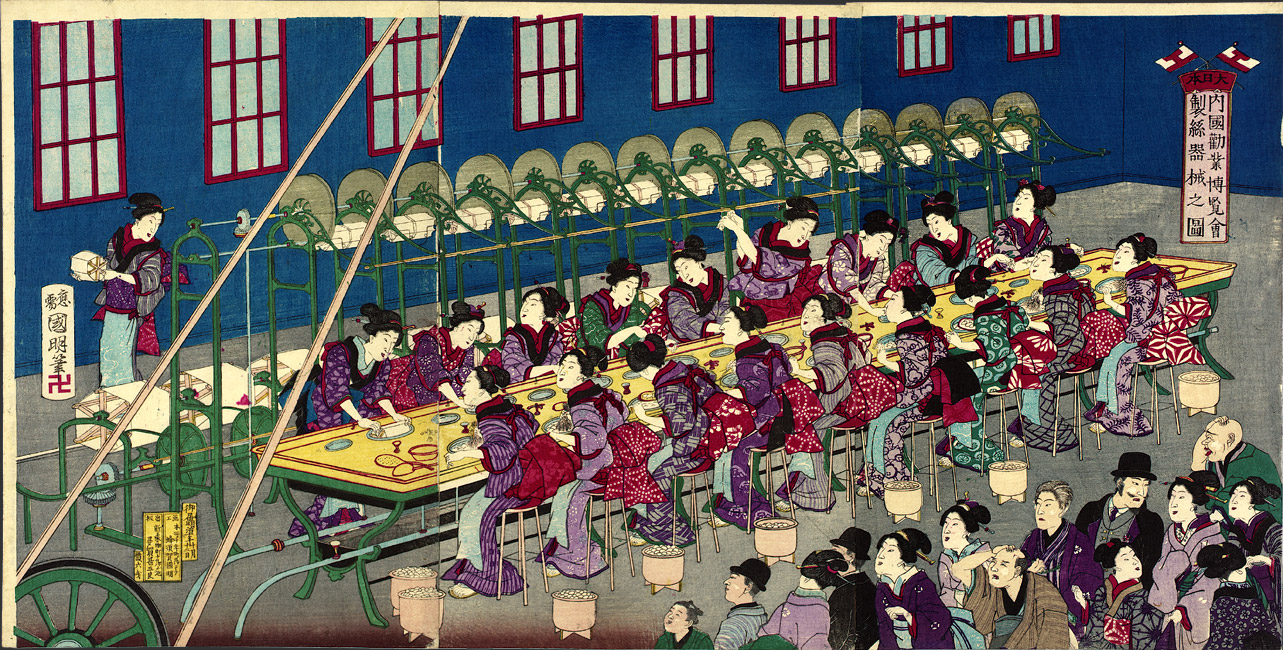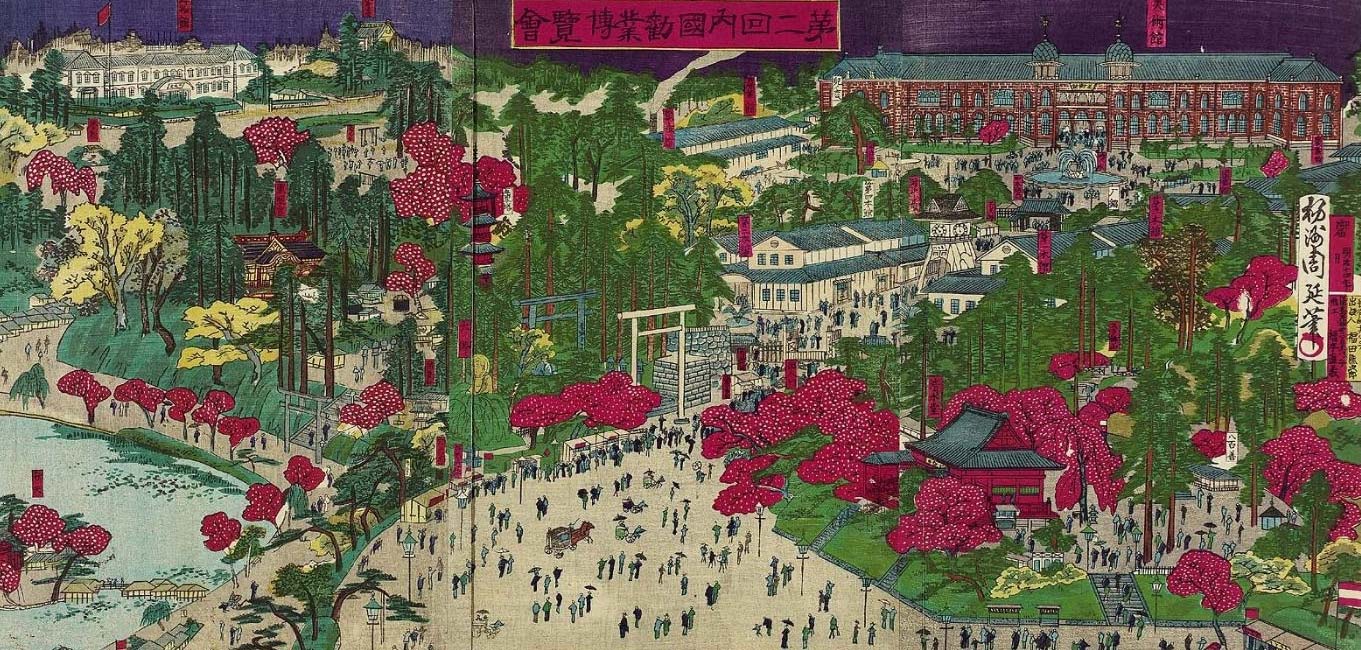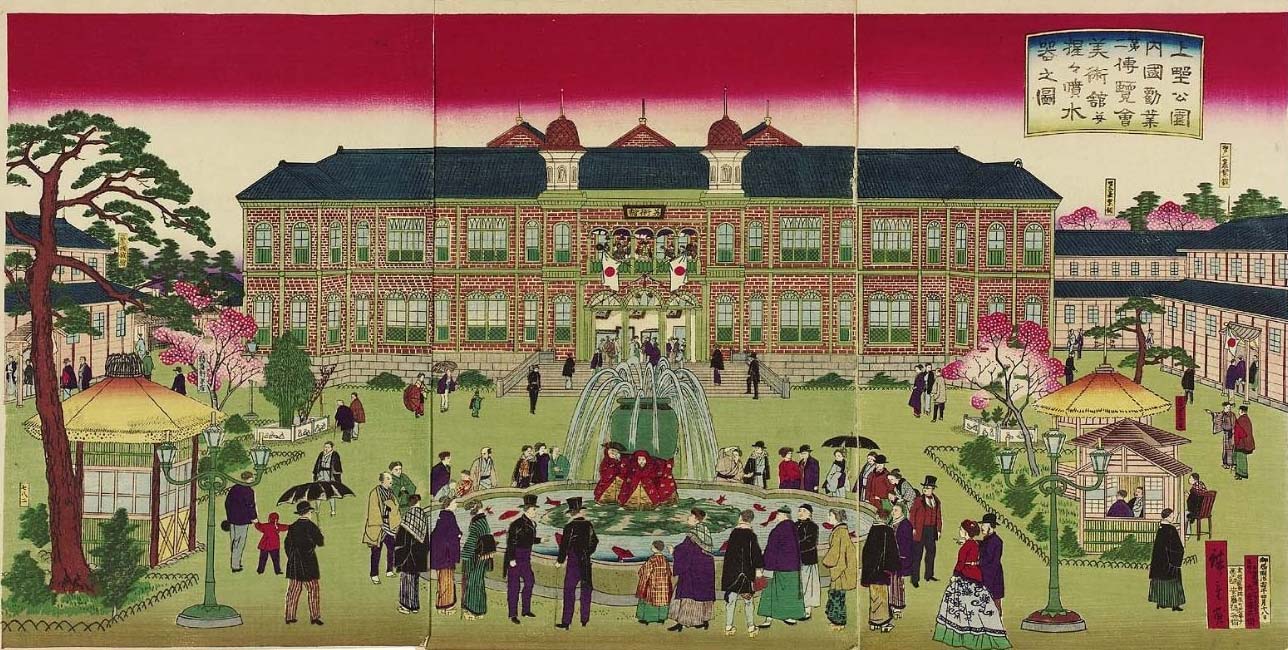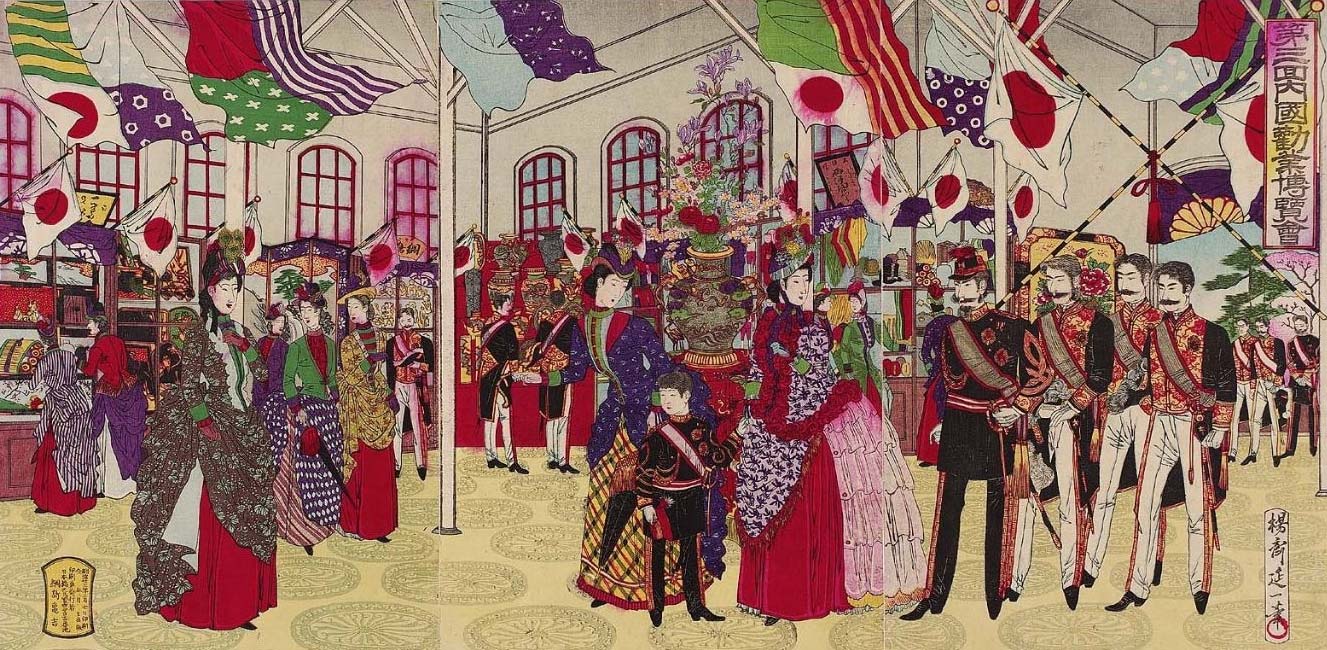"True View of Prosperity: Roundtrip River Steamship Service of the Ryōgok
Transportation Company" by Utagawa Shigekiyo, 1877 [2000.528a-c]
Tenth Anniversary of Telephone System: Kanazawa Post Office , Early 20th century
[2002.7057]
Leonard A. Lauder Collection of Japanese Postcards, Museum of Fine Arts, Boston
In this striking shipbuilding postcard, issued two years after the Russo-Japanese War, workers ride on a gigantic cannon being hoisted for placement on a battleship.
“Famous Places in Tokyo: Picture of Azuma Bridge and a Distant View of a Torpedo Explosion”
by Inoue Tankei, July 1888 [2000.395]
At the beginning of the 20th century, picture postcards began to replace woodblock prints as a vehicle of mass communication. Many of these cards also celebrated technology and industrialization—here, the introduction of the telephone and the extraordinary prowess in military-related heavy industry that Japan had attained by the end of the reign of the Meiji emperor in 1912.
The “telephone” postcard incorporates a photograph of switchboard operators.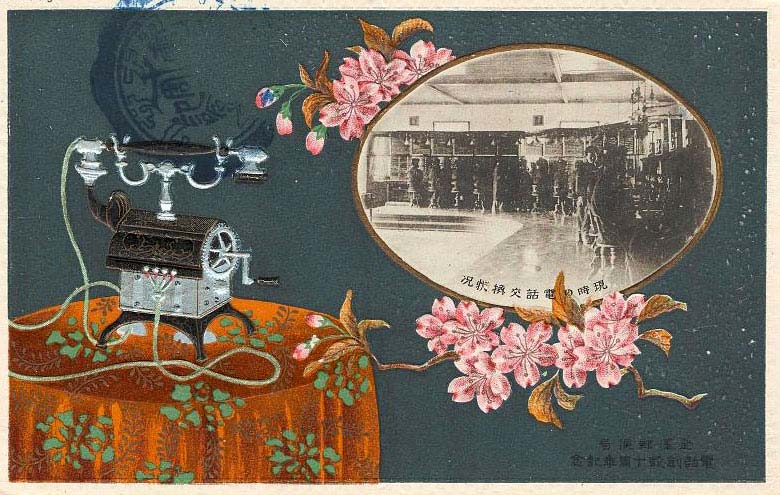
"Steam train between Tokyo and Yokohama" by Utagawa Hiroshige III, 1875
[2000.549]
This 1874 print print features telegraph poles and a locomotive at Shimbashi Station in Tokyo.
Many woodblock prints introduced the Japanese populace to the several expansive “National Industrial Expositions” sponsored from the 1870s on. These expos featured demonstrations (such as the innovative use of machine technology in silk reeling) and native products including export items.
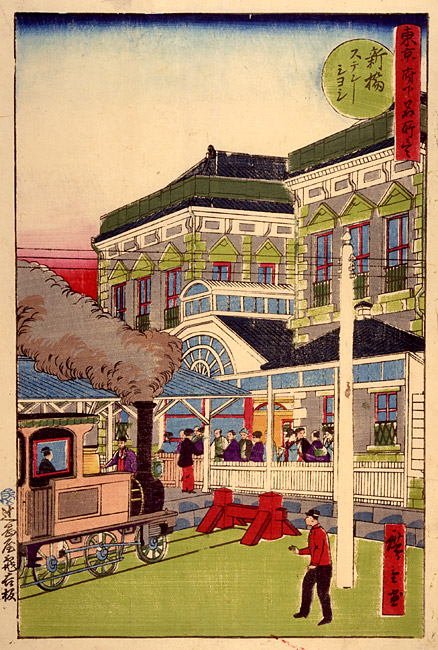 Telegraph wires, brick and stone buildings, iron bridges, horse-drawn carriages, and even rickshaws pulled by coolies were all conspicuous aspects of “Westernization.”
Telegraph wires, brick and stone buildings, iron bridges, horse-drawn carriages, and even rickshaws pulled by coolies were all conspicuous aspects of “Westernization.”
Cherry blossoms in full bloom sometimes gave a native touch to such urban scenes.
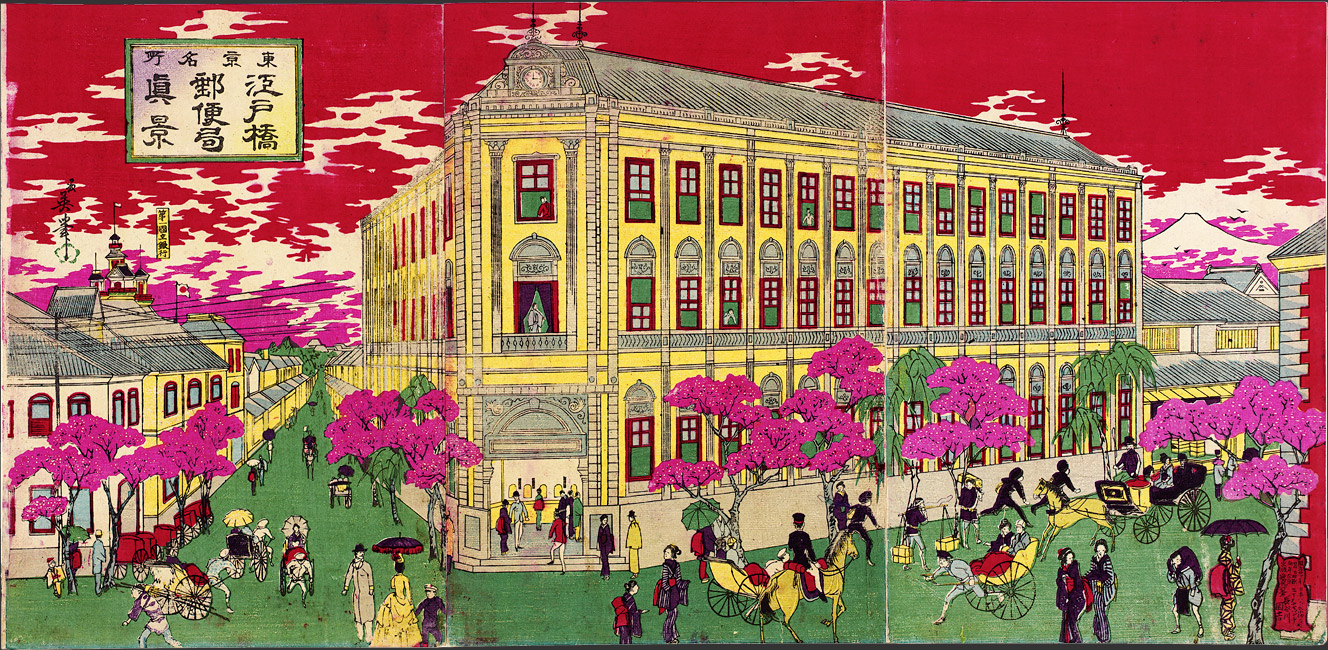
"Shimbashi Station" by Hiroshige III, 1874
[Y0185]
“Famous Places in Tokyo: True View of the Post Office at Edobashi”
by Kobayashi Ikuhide, 1889 [2000.509]
The emperor and empress, along with other high officials, gave luster to these occasions with their presence.
“Illustration of the Silk Reeling Machine at the Japanese National Industrial Exposition”
by Utagawa Kuniaki II, October 1877 [2000.515a-c]
New public buildings such as the great Western-style Fine Arts Museum at Tokyo’s Ueno Park—depicted in the upper right corner of the preceding image and the center of the image to the right—were celebrated in conjunction with the expos.
“The Second National Industrial Exposition” by Toyohara Chikanobu, 1881
[2000.390]
“The Third National Industrial Exposition “ by Watanabe Nobukazu, March, 1890
[2000.396a-c]
Battleship Preparation, 1907 [2002.5229] Leonard A. Lauder
Collection of Japanese Postcards, Museum of Fine Arts, Boston
“The Fine Arts Museum and the Shōjō Fountain at the Second National Industrial
Exposition in Ueno Park“ by Utagawa Hiroshige III, April 1881 [2000.508a-c]
Transportation and communications were vital to the development of a modern economy, and by the 1870s Japan had made dramatic strides in this direction by early introduction of steamships, railways, and a telegraph system.
As the following prints reveal, such “prosperity” took place in a setting of increasing Westernization in architecture, clothing, and the like.
Scroll right...
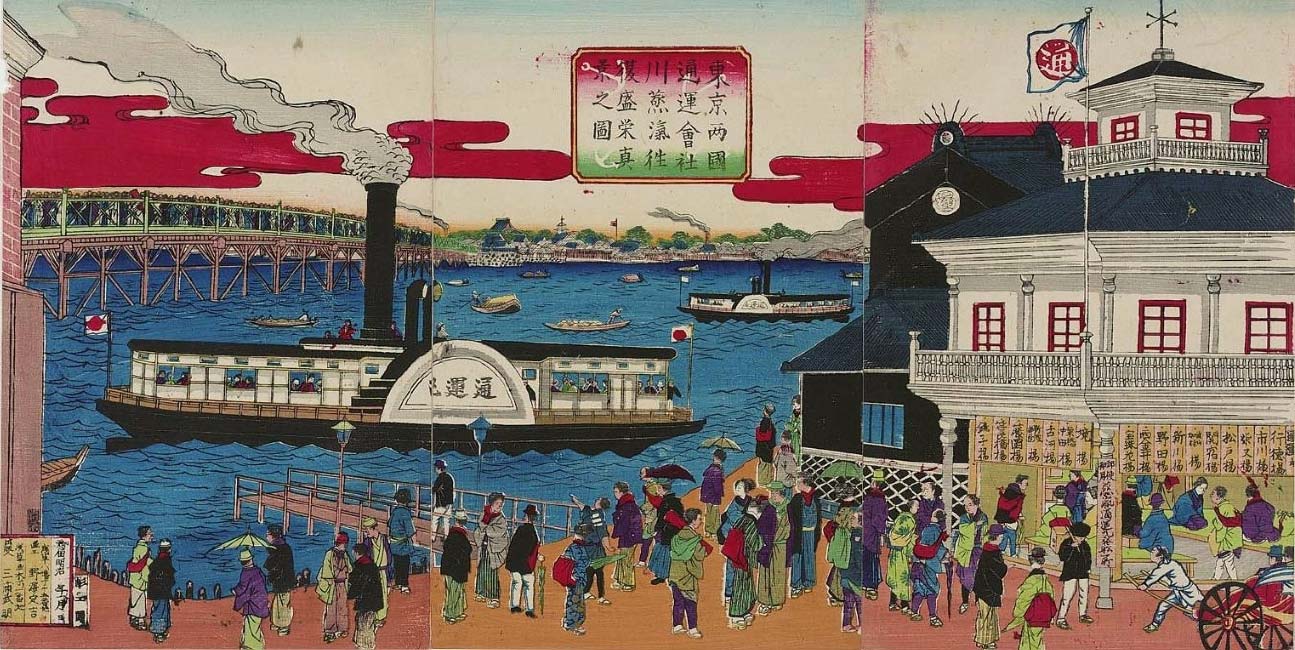

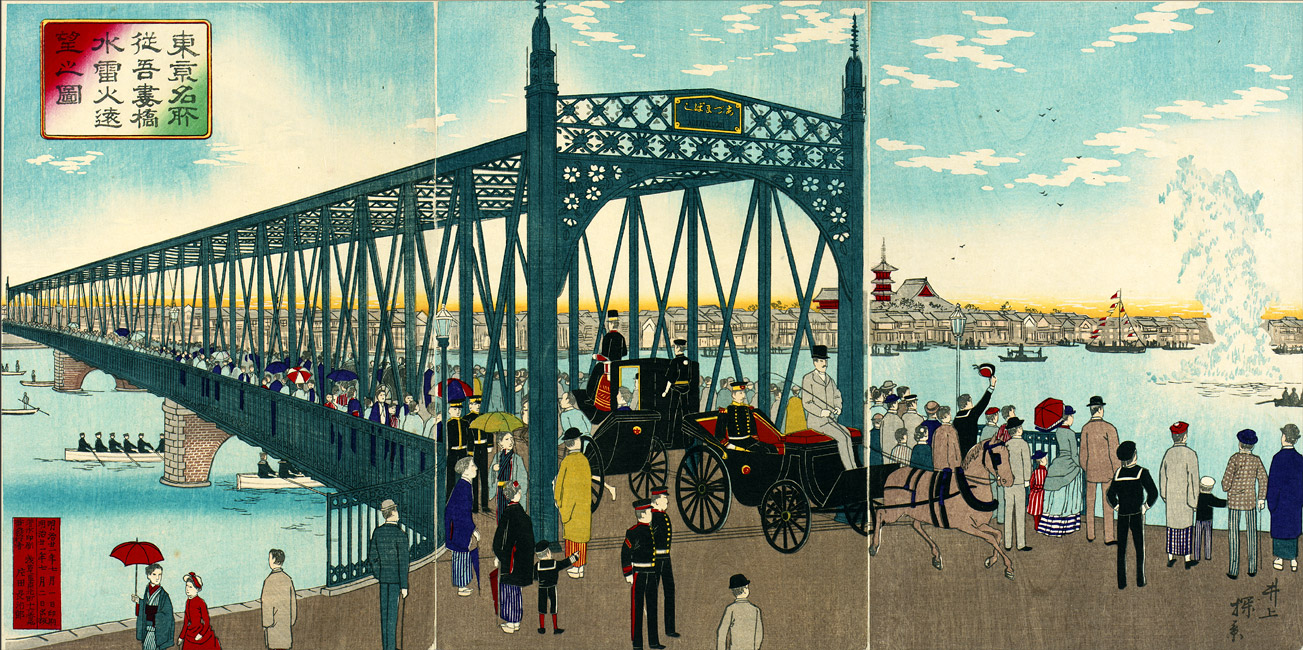
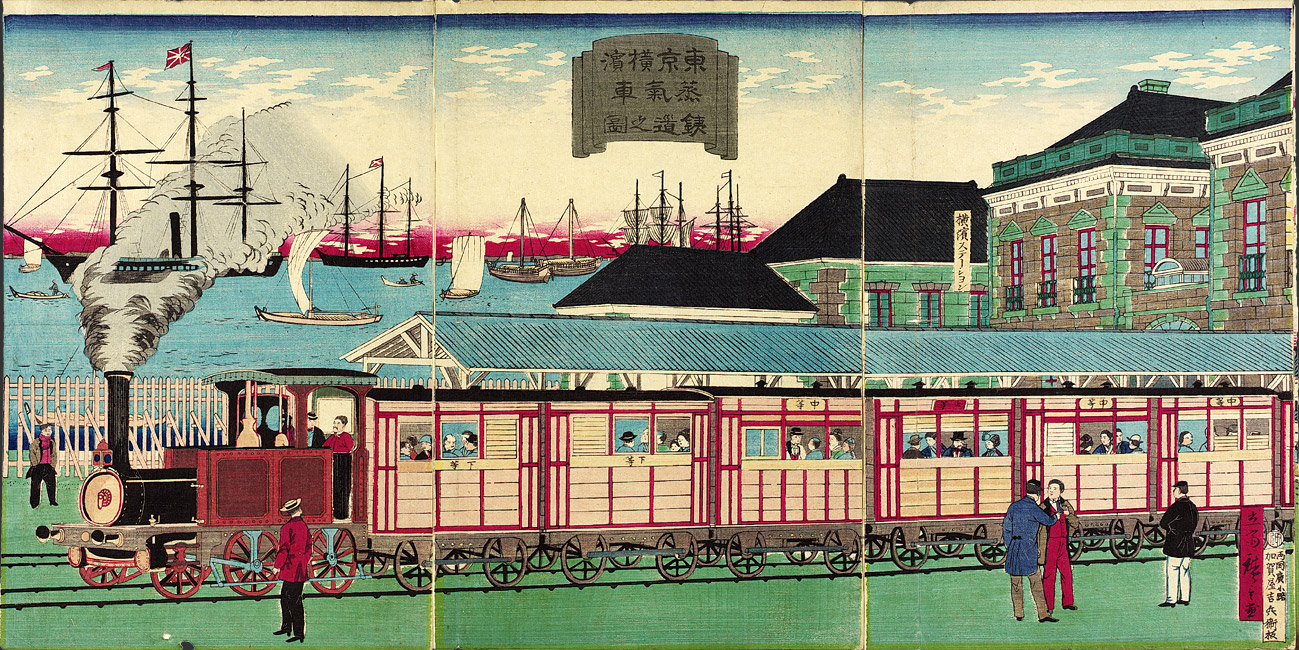
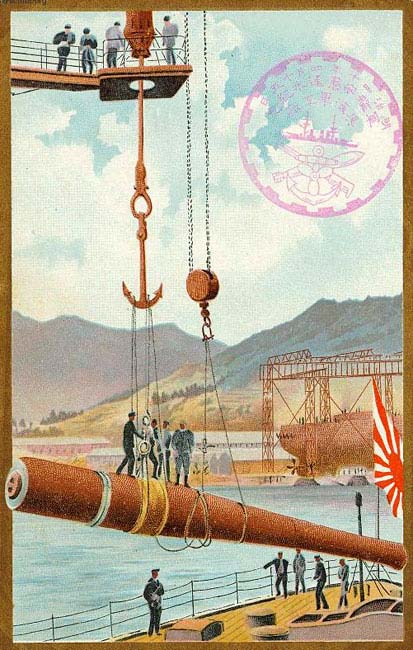

 Telegraph wires, brick and stone buildings, iron bridges, horse-drawn carriages, and even rickshaws pulled by coolies were all conspicuous aspects of “Westernization.”
Telegraph wires, brick and stone buildings, iron bridges, horse-drawn carriages, and even rickshaws pulled by coolies were all conspicuous aspects of “Westernization.”
